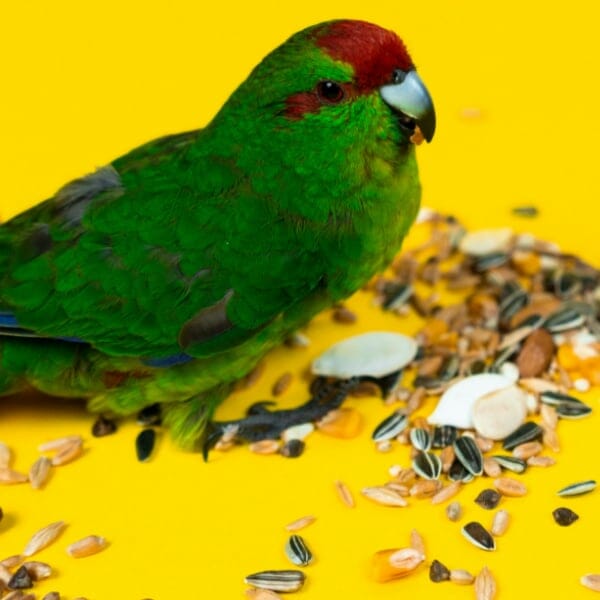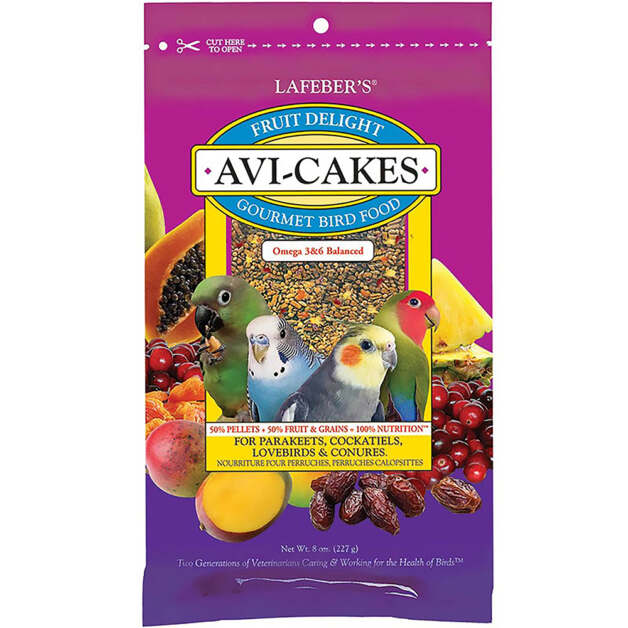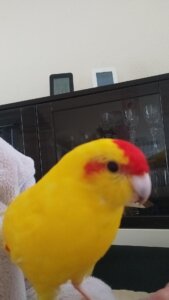What Berries Can Kakarikis Eat: A Nutritional Guide
Kakarikis are delightful, colorful parrots. They need a balanced diet to thrive.
Kakarikis enjoy a variety of fruits and vegetables. But not all berries are safe for them. It’s important to know which berries are healthy and which ones to avoid. Feeding your Kakariki the right berries can boost their health and happiness.
In this post, we will explore the best berries for Kakarikis. You’ll learn which berries are safe and nutritious for your feathered friend. This guide will help you make informed choices for your Kakariki’s diet. So, let’s dive in and discover the best berries for your Kakariki.

Credit: www.freepik.com
Introduction To Kakarikis’ Diet
Kakarikis enjoy eating a variety of berries. Blueberries, strawberries, and raspberries are safe and nutritious options. These berries provide essential vitamins and antioxidants for their diet.
Kakarikis are lively and curious parrots. Their diet plays a vital role in their health and happiness. A balanced diet keeps them active and colorful. Understanding what to feed these birds is key to their well-being. Let’s explore the importance of proper nutrition and how berries fit into their diet.Importance Of Proper Nutrition
Proper nutrition keeps Kakarikis healthy. They need a variety of foods to thrive. Fresh fruits, vegetables, seeds, and pellets are essential. Each food group provides different nutrients. This variety ensures they get everything they need. A poor diet can lead to health problems. Deficiencies in vitamins or minerals are common. These issues can cause dull feathers or lethargy. Balanced nutrition helps prevent these problems. It supports their immune system and overall health.Role Of Berries In Their Diet
Berries are a great addition to their diet. They are rich in vitamins and antioxidants. Berries like blueberries, strawberries, and raspberries are safe for Kakarikis. These fruits are tasty and nutritious. Berries provide essential nutrients. They offer vitamins A, C, and K. These vitamins support their immune system. Berries also contain fiber. Fiber aids in digestion and keeps them regular. Feeding berries to Kakarikis is easy. Offer them fresh and washed berries. Avoid giving too many at once. A small handful a few times a week is enough. This ensures they get the benefits without overeating. Including berries in their diet adds variety. It keeps their meals interesting and nutritious. Remember to rotate different types of berries. This way, they enjoy different flavors and nutrients. “`Safe Berries For Kakarikis
Kakarikis are vibrant, playful birds that thrive on a varied diet. Including safe berries in their meals can boost their health and happiness. But which berries are safe for them? Let’s explore some of the best options.
Blueberries
Blueberries are small, juicy, and packed with nutrients. They are rich in antioxidants which can support your Kakariki’s immune system. These berries are also low in calories, making them a healthy treat.
- Rich in vitamins C and K
- High in fiber
- Low in sugar
Offer a few blueberries at a time. Ensure they are fresh and washed thoroughly.
Strawberries
Strawberries are another safe option for Kakarikis. These berries are sweet and delicious. They provide essential vitamins and minerals.
| Nutrient | Benefit |
|---|---|
| Vitamin C | Boosts immune system |
| Folate | Supports cell function |
Cut strawberries into small pieces. Remove the leaves and wash them well.
Raspberries
Raspberries are safe and nutritious. They contain antioxidants and fiber. These can help with digestion and overall health.
- Rich in dietary fiber
- Contains vitamin C
- Low in calories
Feed raspberries in moderation. Always ensure they are clean and fresh.
Blackberries
Blackberries are a great addition to your Kakariki’s diet. They are high in vitamins and minerals. These berries can support your bird’s overall health.
- High in vitamin C
- Contains vitamin K
- Good source of fiber
Offer a few blackberries now and then. Make sure they are washed and free from pesticides.
Nutritional Benefits Of Berries
Berries are a great addition to a Kakariki’s diet. They are packed with essential nutrients that promote health and vitality. Let’s delve into the specific nutritional benefits berries offer.
Vitamins And Minerals
Berries are rich in essential vitamins and minerals. These nutrients are crucial for a Kakariki’s well-being. Some key vitamins and minerals found in berries include:
- Vitamin C: Boosts the immune system.
- Vitamin K: Helps with blood clotting.
- Fiber: Aids in digestion.
- Potassium: Supports heart health.
- Folic Acid: Important for cell growth.
Feeding berries provides Kakarikis with these vital nutrients. This ensures they stay healthy and active.
Antioxidant Properties
Berries are known for their high antioxidant content. Antioxidants are compounds that protect cells from damage. They play a crucial role in maintaining overall health. Some antioxidants found in berries are:
- Anthocyanins: Found in blueberries and raspberries.
- Flavonoids: Present in strawberries and blackberries.
- Ellagic Acid: Found in raspberries and strawberries.
Including antioxidant-rich berries in a Kakariki’s diet helps combat oxidative stress. This promotes longevity and vitality.
Serving Berries To Kakarikis
Kakarikis are lively and curious parrots. They need a varied diet to stay healthy. Berries are a great treat for them. They are rich in vitamins and antioxidants. But how should you serve berries to your Kakariki? Let’s break it down.
Portion Sizes
Keep the portions small. A few berries at a time are enough. Too many berries can upset their stomach. Cut larger berries into smaller pieces. This makes it easier for them to eat. Smaller berries like blueberries can be given whole.
Frequency Of Feeding
Feed berries to your Kakariki a few times a week. They should not be a daily treat. Berries should be part of a balanced diet. Include seeds, pellets, and vegetables too. Rotate the types of berries you offer. This keeps their diet varied and interesting.
Preparing Berries For Kakarikis
Preparing berries for your Kakarikis involves several important steps to ensure their safety and enjoyment. Proper preparation can help maintain the nutritional value of the berries while making them more enticing for your feathered friend.
Washing And Cleaning
Always start by washing the berries under running water. This helps remove any pesticides and dirt. Use a colander for easy rinsing. Gently scrub the berries with your fingers to ensure all surfaces are clean. Pat the berries dry with a paper towel.
Cutting And Presentation
After washing, cut the berries into small, bite-sized pieces. This makes it easier for Kakarikis to eat. Use a sharp knife to make clean cuts. Arrange the berry pieces in a small bowl or on a plate. This makes the berries more appealing and accessible. Rotate different types of berries to keep your Kakariki interested.
Potential Risks And Precautions
Feeding berries to your Kakariki can be both rewarding and beneficial. Yet, it’s essential to be aware of potential risks and take necessary precautions. Ensuring the safety and health of your feathered friend is paramount.
Allergic Reactions
Even though berries are generally safe, some Kakarikis might have allergies. Watch for signs like swelling or unusual behavior. If you notice any symptoms, stop feeding the berries immediately. Contact your vet for advice. Always introduce new foods slowly.
Overfeeding Concerns
Too many berries can lead to obesity in Kakarikis. Berries are high in natural sugars. Limit their intake to prevent weight gain. Balance their diet with other fruits, vegetables, and seeds. A varied diet ensures they get all the needed nutrients. Monitor their weight regularly.
Berries To Avoid
When feeding berries to your Kakarikis, it’s crucial to know which varieties to avoid. Some berries are toxic or may contain harmful chemicals. This section highlights the berries you should keep away from your feathered friends.
Toxic Varieties
Some berries are toxic to Kakarikis. Feeding these can lead to health issues:
- Holly berries can cause digestive problems.
- Mistletoe berries are highly toxic and can be fatal.
- Yew berries contain toxic substances that harm birds.
- Pokeweed berries are dangerous and can lead to poisoning.
Pesticide Risks
Berries treated with pesticides are a risk. Pesticides can cause health problems in birds.
Consider these tips to reduce pesticide exposure:
- Buy organic berries.
- Wash berries thoroughly with water.
- Consider growing your own berries.
By avoiding toxic berries and reducing pesticide exposure, you can help keep your Kakarikis healthy and happy.

Credit: feistyfeathers.com
Incorporating Berries Into A Balanced Diet
Berries are a delicious and nutritious addition to a Kakariki’s diet. They provide essential vitamins and antioxidants, which support the bird’s overall health. Incorporating berries, such as strawberries, blueberries, and raspberries, into their diet can be simple and beneficial.
Combining With Other Foods
To create a balanced meal, combine berries with other foods. Kakarikis enjoy a mix of fruits, vegetables, seeds, and pellets. This variety ensures they receive a full range of nutrients.
Consider the following combinations:
- Strawberries with apple slices and spinach leaves.
- Blueberries with carrot shreds and broccoli florets.
- Raspberries with cucumber slices and bell pepper strips.
Mixing these foods keeps meals exciting and nutrient-rich.
Creating A Meal Plan
A meal plan helps ensure your Kakariki gets a balanced diet. Rotate berries and other foods throughout the week to provide variety and prevent boredom.
| Day | Fruits | Vegetables | Seeds/Pellets |
|---|---|---|---|
| Monday | Strawberries, Apple | Spinach, Broccoli | Sunflower Seeds, Pellets |
| Tuesday | Blueberries, Banana | Carrot, Cucumber | Millet, Pellets |
| Wednesday | Raspberries, Grapes | Bell Pepper, Kale | Flax Seeds, Pellets |
| Thursday | Strawberries, Pear | Spinach, Celery | Chia Seeds, Pellets |
| Friday | Blueberries, Orange | Carrot, Zucchini | Hemp Seeds, Pellets |
Adjust the plan based on your bird’s preferences and health needs. This ensures your Kakariki enjoys a varied and balanced diet.

Credit: windycityparrot.com
Frequently Asked Questions
Can Kakarikis Eat Strawberries?
Yes, Kakarikis can eat strawberries. They are a safe and nutritious treat. Ensure strawberries are washed thoroughly before feeding.
Are Blueberries Safe For Kakarikis?
Blueberries are safe for Kakarikis to eat. They are rich in antioxidants and vitamins. Serve them in moderation.
Can Kakarikis Have Raspberries?
Kakarikis can eat raspberries. They are a healthy fruit option. Always wash them well before serving.
Do Kakarikis Enjoy Blackberries?
Kakarikis enjoy blackberries. They are nutritious and safe. Wash thoroughly and serve in small portions.
Conclusion
Kakarikis enjoy a variety of berries in their diet. Strawberries, blueberries, and raspberries are safe options. Berries offer essential nutrients and can be a fun treat. Always wash berries before serving them. Introduce new foods gradually to monitor any reactions.
A balanced diet keeps your Kakariki happy and healthy. Providing a mix of fruits and vegetables ensures they get necessary vitamins. Observing their preferences helps in creating a varied diet. Enjoy watching your Kakariki thrive with these delicious berry options!
Hello Dear, I'm Poli Kolymnia, owner of many birds (including budgies).
With a deep passion for these feathered companions, I'm here to share my expertise and extensive knowledge on birds care.
My articles cover essential topics like diet, housing, care, and health, providing practical tips to help you create a happy and thriving environment for your birds.




